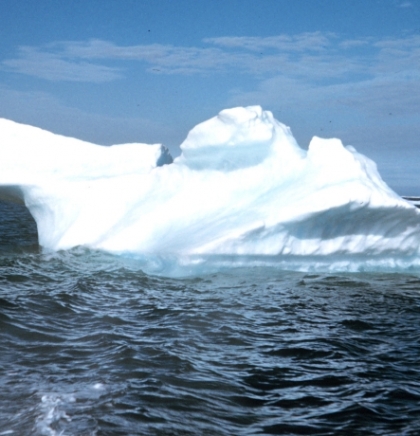The Ocean Is Filling Up With ‘Plastic Smog’
05.07.2017 at 13:32
- Ecology
- 0
Every year, billions of pounds of plastic waste ― grocery bags, drinking straws, even cigarette butts ― pour into our oceans. Used by humanity for a few minutes at most, these single-use plastics likely will likely stick around for decades, or longer.
Trillions of pieces of refuse get trapped by natural ocean currents, or gyres, at five locations, causing a dance of debris for hundreds of thousands of square miles. While these gyres, geographically removed from civilization, hold much higher concentrations of trash than other regions of the ocean, they’re evidence of a growing problem humans have mostly ignored since we embraced widespread plastic use 50 years ago. But now, researchers are ringing a warning bell: Our reliance on cheap, disposable stuff is smothering the seas, and it’s bound to get worse.
Marcus Eriksen, a co-founder of the conservation group 5 Gyres, likens this growing horror to smog that covers cities like Los Angeles and Beijing.
It’s an apt description. Over time, a plastic item in the ocean breaks down into many tiny particles, known as microplastics ― so many, in fact, that if you were to stand on the bottom of the ocean in the middle of a gyre and look up, the water overhead wouldn’t look clear, Eriksen said.
“What you’d see are these massive clouds,” Eriksen said. “Clouds of micro- and nano-plastics stuck in the ocean’s gyres.”
Perhaps the smoggiest of these gyres is the Great Pacific Garbage Patch, hovering a few hundred miles north of Hawaii. Reports describe it as a floating island of trash twice the size of Texas, so dense you could walk across it, and so vast you can see it from space. But such descriptions are misleading, scientists say.
“The name ‘garbage patch’ is a misnomer,” wrote researchers at the National Oceanic and Atmospheric Administration’s Marine Debris Program in 2012. “There is no island of trash forming in the middle of the ocean, and it cannot be seen with satellite or aerial photographs.”
Rather, it’s more like a swarm of microplastic bits.
Credit: NOAA Marine Debris Program
Marine debris accumulations in the North Pacific Ocean.
At last estimate, there were some 5.25 trillion pieces of plastic trash floating along the surface of the ocean. Waves, salt and UV radiation from the sun will eventually break down these items into microplastic particles, each less than 5 millimeters long. If you tried to account for not just the large pieces of plastic bobbing about, but also the particles, you’d be looking at a number close to 51 trillion, or “500 times more than the stars in our galaxy,” according to the United Nations Environment Program.
By now, plastic bits are so pervasive they’ve spread to some of the furthest reaches of the globe. Just last month, scientists said ocean plastic has started washing up in the Arctic for the first time.
“It’s on every beach, found in sediment worldwide, a small particulate that’s diffuse throughout the water column,” Eriksen said. “It’s a plastic smog throughout the world’s ocean.”
And, like its airborne namesake, this oceanic haze has not been harmless.
Plastic, It’s What’s For Dinner
Recent studies have linked the growing amount ocean plastic to a host of health impacts in marine creatures.
Dramatic photographs taken in 2011 were among the first to show such devastation: rotting albatross carcasses on Midway Atoll, a remote island in the North Pacific right in the middle of the region affected by the Great Pacific Garbage Patch. The images showed more than a dozen bird skeletons stuffed with colorful bits of plastic. Their stomachs were so full of the material that scientists said the animals died from malnutrition.
Rick Loomis via Getty Images
Albatrosses have become a bellweather species for the plastic pollution problem, ingesting the material and dying en masse.
Researchers have since discovered that plastics bobbing in the ocean can pick up scents that marine birds have long associated with food sources. Albatrosses have a sharp sense of smell and will inadvertently gobble up a pen cap that smells like fish, for instance.
These impacts have spread as the trash multiplies. A paper published in 2015 found 186 species of seabirds are now at risk of plastic ingestion. It estimated that by 2050, 99 percent of all seabirds will have eaten plastic at some point in their lives.
Qamar Schuyler, a scientist with Australia’s Commonwealth Scientific and Industrial Research Organization, has documented a similar phenomenon in sea turtles. In a blog written for Greenpeace last year, Schuyler said that during her time as a biologist at The University of Queensland, about 30 percent of the turtles she performed necropsies on had plastic in their stomachs.
Schuyler speculated the turtles were confusing things like plastic grocery bags for jellyfish, a primary food source.
But people aren’t eating plastic particles, right?
Actually, science says yes, we are. A recent study found about one-fourth of seafood sampled from fish markets in California and Indonesia had plastic in their guts. While the link between fish entrails and our own stomachs isn’t fully understood (fish guts are usually removed before the fish reaches the dinner table), another study conducted among Europeans who ate large amounts of filter-feeding mussels and oysters found some humans consume up to 11,000 microplastic pieces per year.
It’s unclear what all of this ingested plastic can do to human health. “Our understanding of the fate and toxicity of microplastics in humans constitutes a major knowledge gap,” the U.N. Environment Program noted in a 2016 report.
(http://www.huffingtonpost.com)




Comments: 0
NAPOMENA: Komentari odražavaju stavove njihovih autora, a ne nužno i stavove redakcije BHPutovanja.ba. Molimo korisnike da se suzdrže od vrijeđanja, psovanja i vulgarnog izražavanja. Redakcija zadržava pravo da obriše komentar bez najave i objašnjenja. Zbog velikog broja komentara redakcija nije dužna obrisati sve komentare koji krše pravila. Kao čitalac također prihvatate mogućnost da među komentarima mogu biti pronađeni sadržaji koji mogu biti u suprotnosti sa vašim vjerskim, moralnim i drugim načelima i uvjerenjima.
You have to sign in to leave comment.